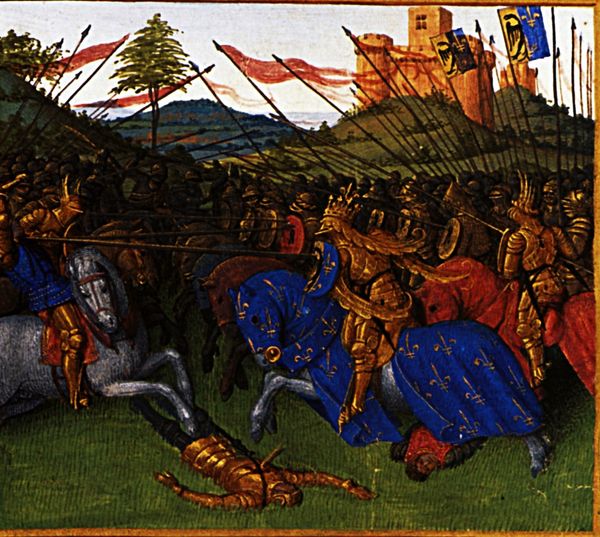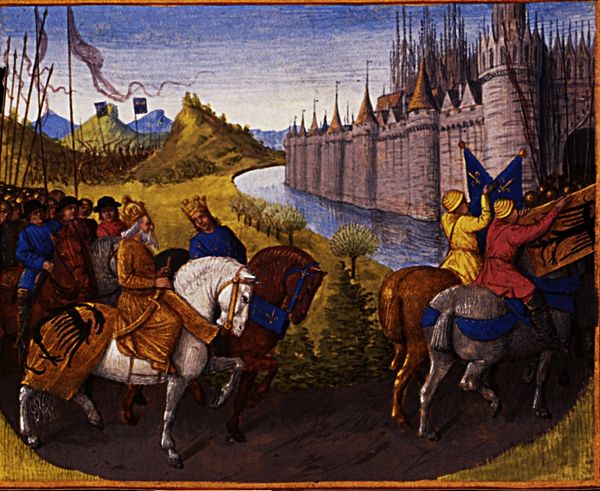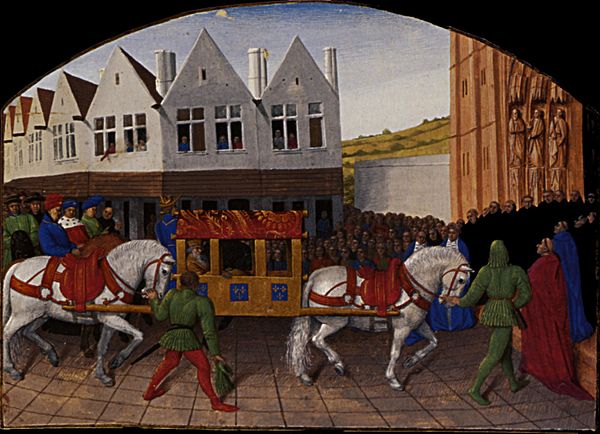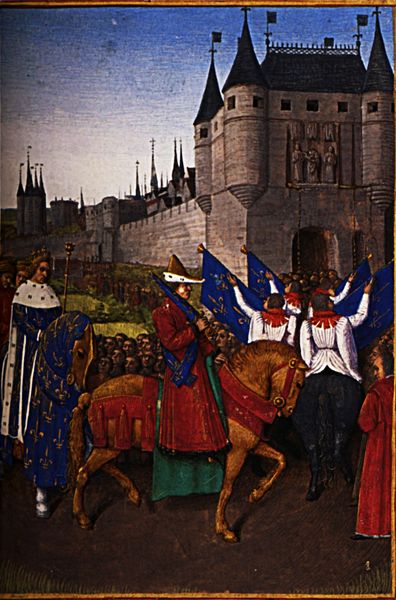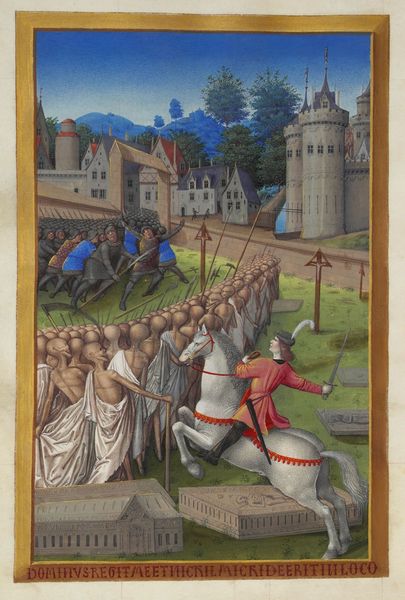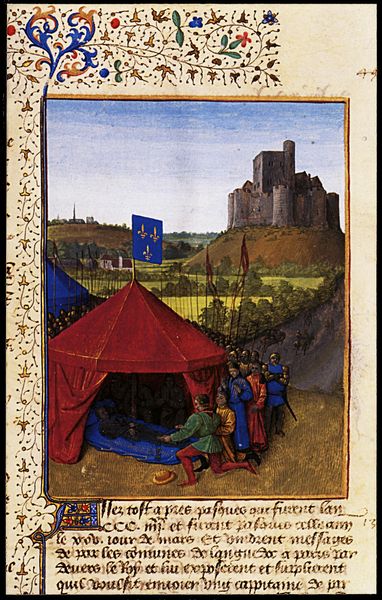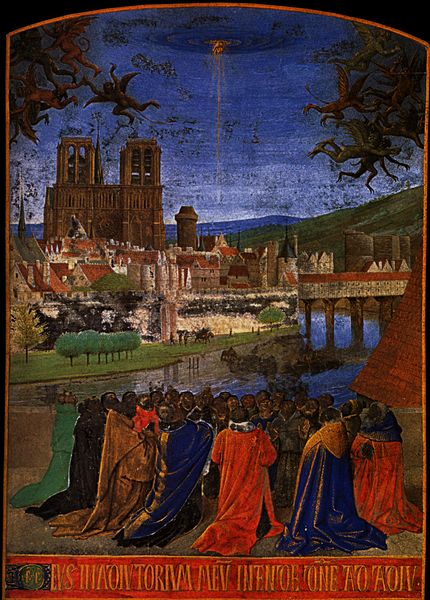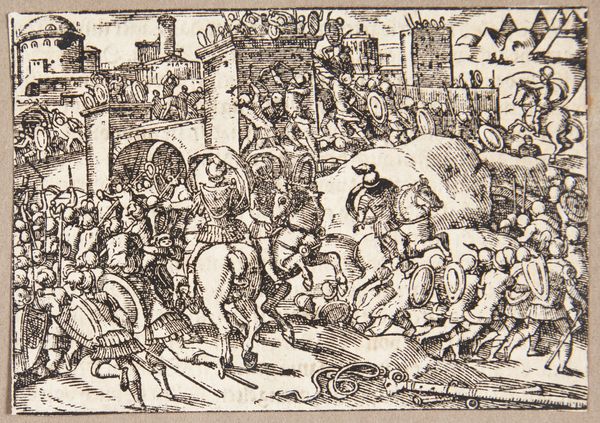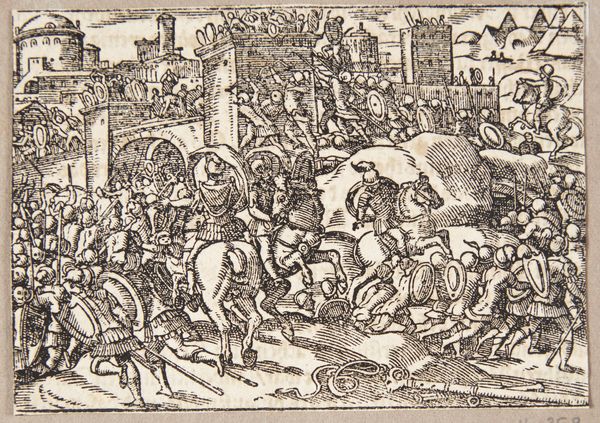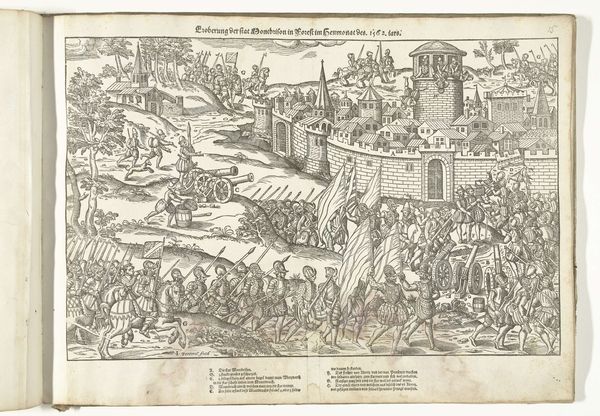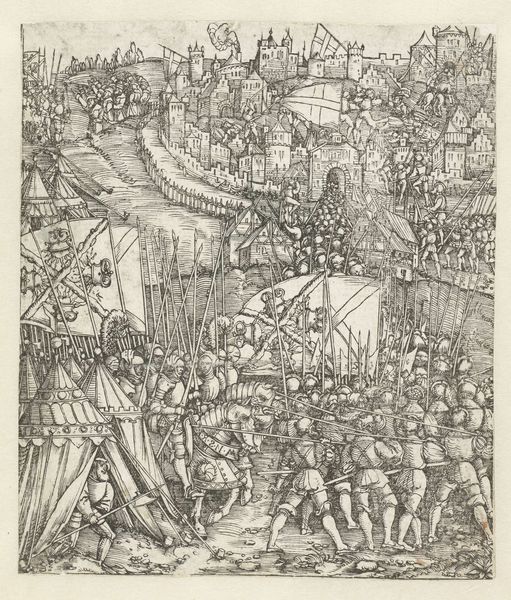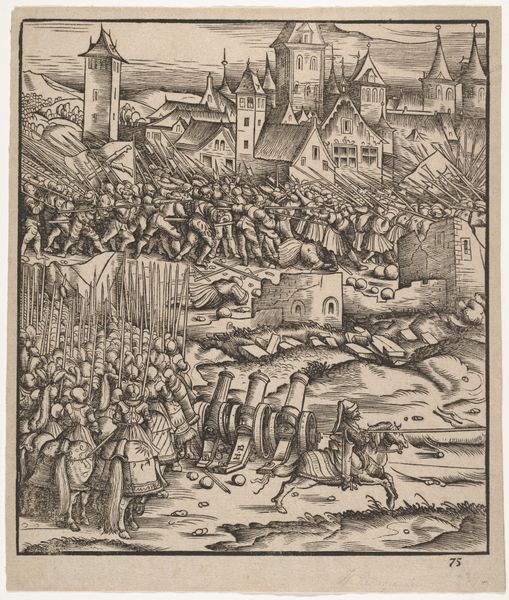
King Clothar II (584-629) cannot bring back his son Dagobert I (605-39) to Paris 1460
0:00
0:00
jeanfouquet
Bibliothèque nationale de France (BnF), Paris, France
tempera, painting
#
portrait
#
medieval
#
tempera
#
painting
#
cityscape
#
history-painting
#
international-gothic
#
academic-art
#
portrait art
#
miniature
Copyright: Public domain
Curator: Jean Fouquet painted "King Clothar II cannot bring back his son Dagobert I to Paris" in 1460, currently held at the Bibliothèque Nationale de France. It’s done with tempera on a panel. Editor: My first impression is one of stark contrasts: a city teeming with light in the background versus the dark tragedy unfolding in the foreground. The composition feels carefully staged, almost like a theatrical tableau. Curator: Yes, and notice how that darkness permeates the visual narrative. It speaks volumes about the historical context and the potent symbolism of a father’s powerlessness over death, which resonates even now. This miniature captures the drama when King Clothar attempts, in vain, to move his deceased son Dagobert's remains to Paris. The cityscape behind hints at Paris as a symbolic beacon, a center of power and culture. Editor: It’s interesting how Fouquet uses a miniaturist's scale to depict such a grand historical moment. There is almost a disconnect, it seems, between the intimacy of the size and the gravity of the event. How do you read that contrast? Curator: I read it as deliberate. Miniatures were often intended for private contemplation. Fouquet transforms this personal viewing space into a stage for meditating on themes of loss, succession, and the fragility of life—themes encoded with cultural values of loyalty, family honor, and leadership, still recognizable today. Editor: Let's talk about the palette: there’s a deliberate use of gold to highlight the royal figures, pulling our eye even though the shadowed figure is meant to be our focus. The contrast enhances their status. Do you think Fouquet effectively uses color here to direct the narrative and emotion, or does the balance fall somewhat short given his medium? Curator: Oh, he uses it masterfully! The colors, even those reserved for death, like the muted blue and blood red inside the building, have a stark brightness that emphasizes the reality, that communicates loss with precision. It creates a powerful emotional connection and underlines themes of power and succession. Editor: Considering its diminutive size and material—tempera—I have to admit its visual impact and complexity, for a painting about the failure of succession, is impressive. The interplay of the macro (city) and micro (emotion) resonates deeply. Curator: I agree. Seeing the image helps reveal why Fouquet's illumination of history resonates through centuries. He has revealed not only the king and his city, but something about all of us in moments of mortality.
Comments
No comments
Be the first to comment and join the conversation on the ultimate creative platform.
